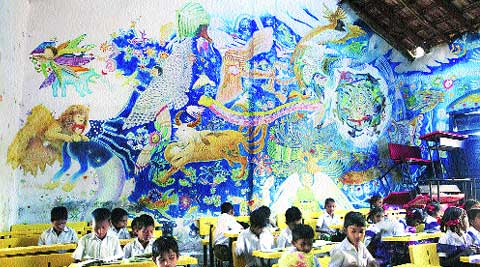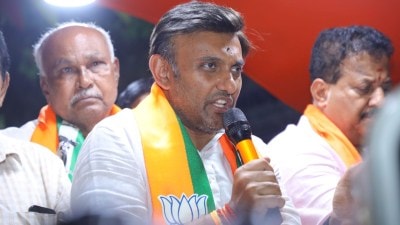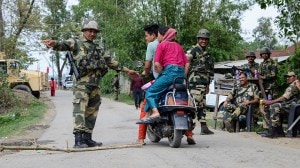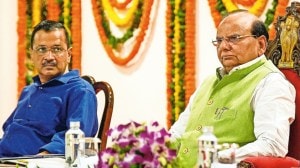- India
- International
Wall art in village schools attracts students to classroom
Japanese and Indian artists create breathtaking wall art in village schools to bring students closer not just to art, but classrooms too.
 Japanese muralist Yusuke Asai. (Source: Express photo by Kenta Yoshizara)
Japanese muralist Yusuke Asai. (Source: Express photo by Kenta Yoshizara)
Every year since 2010, the walls of schools in the villages of Sujata in Bodhgaya (Bihar) and Ganjad (Maharashtra) acquire the proverbial ears, perhaps even eyes, face and limbs for a few days. The blank, off-white walls metamorphose into spaces where suns and stars appear at the same time, and mountains and trees rise overnight. The usual inventory that make up a classroom — books, benches, and tables — disappear, and brushes and paints take their stead.
As a part of a remarkable initiative called the Wall Art Project, co-produced by the Japan Foundation, a team of Japanese and Indian artists transform classrooms for what they call the Wall Art Festival (WAF). The project was conceptualised after Tokyo-based educationist Akiko Ookuni first visited Niranjana Public Welfare School in Bihar in 2009, which was built by donations from 50 Japanese students. There she noticed a low attendance. “We thought that if we were to organise art events that support as well as enhance creativity in children, it would give some attention to the problem,” says Kazunori Hamao, WAF director-coordinator, who stays in India.
WAF was set up in 2009 with a team of local as well as Japanese artists. The first festival was held a year later with Delhi-based community artist Sreejata Roy and Japanese muralist Yusuke Asai. The number of artists have grown substantially over the last four years.
The project, which also happened in Fukushima and Sakura, Japan, follows a format where artists not only work, but also live, eat and engage with children. Once on the field, artists create murals employing their individual artistic sensibilities, yet also taking in the surroundings. Last year, Japanese contemporary artist Akira Kamo, for instance, observed the river bank where children gathered in the morning. “Between 8 am and 8.05 am, there is a moment where the sun rises and shines over everything. I wanted to paint this and tell them, ‘Maybe you don’t notice but you’re living in such a beautiful moment,” he says, about his series, My gaze towards you. WAF has also invited Indian artists such as photographer Gauri Gill, Delhi-based community artist Sreejata Roy and Warli painter Rajesh Chaitya Vangad to Tokyo.
The festival has been received generously by the villagers, more so by the children. “After the first edition, the principal told us that 100 more kids had been admitted to the school,” says Ookuni. They also saw that this interaction helped the quieter students open up.

The festival also includes photography exhibitions, abstract performances, food and community activities.
On a brief visit to Delhi, Ookuni and Hamao showed us photographs of the Wall Art Project. Photographs are all they have, because the wall art is erased as soon as the festival gets over. “It’s impossible to preserve it because the rooms are used. It’s not a museum-like space. One of the main objectives is to hand over the walls back to the villagers, to create something and make it their own once we’re gone,” says Hamao. The only work that survives is artist Maki Ohkojima’s Let’s Talk About The Story of Big Sky in Niranjana school.
After wrapping up their fifth edition in Ganjad, Maharashtra, this February, Ookuni has now launched Earth Art Project (EAP) in Ladakh, where Ookuni and Hamao visited Nang Middle School in Thaktok and Nomadic Residential School in Puga. “We met the children last year. They said they want to be educated nomads and take their rich nomadic culture forward. That a place like this had a school in the first place, and then to see this kind of ambition was amazing,” says Ookuni. The first edition of EAP has already invited seven artists, including prominent Japanese music composer Tomoko Momiyama, artist Ryo Fujii and Indian artist Nobina Gupta, for exhibitions on July 27 and August 10 and 11 in both the schools.
The project will also start Nako Project in Warli to promote the art form, and are preparing for the next WAP in 2016. Not deterred by the fact that the project remains in the grassroot level, Ookuni says, “We’re working towards a place where Indian and Japanese children can come together and create something.”
Apr 27: Latest News
- 01
- 02
- 03
- 04
- 05








































